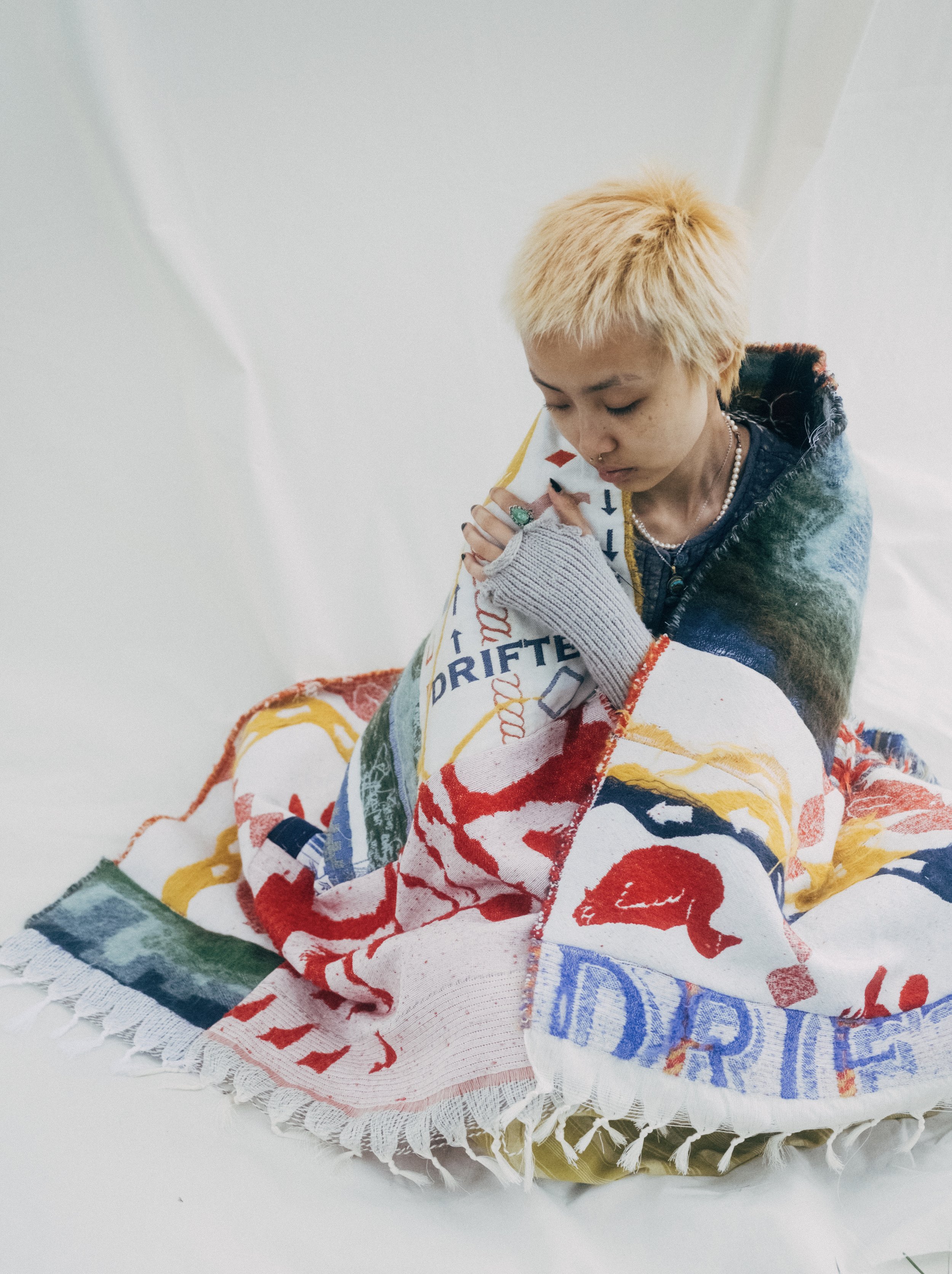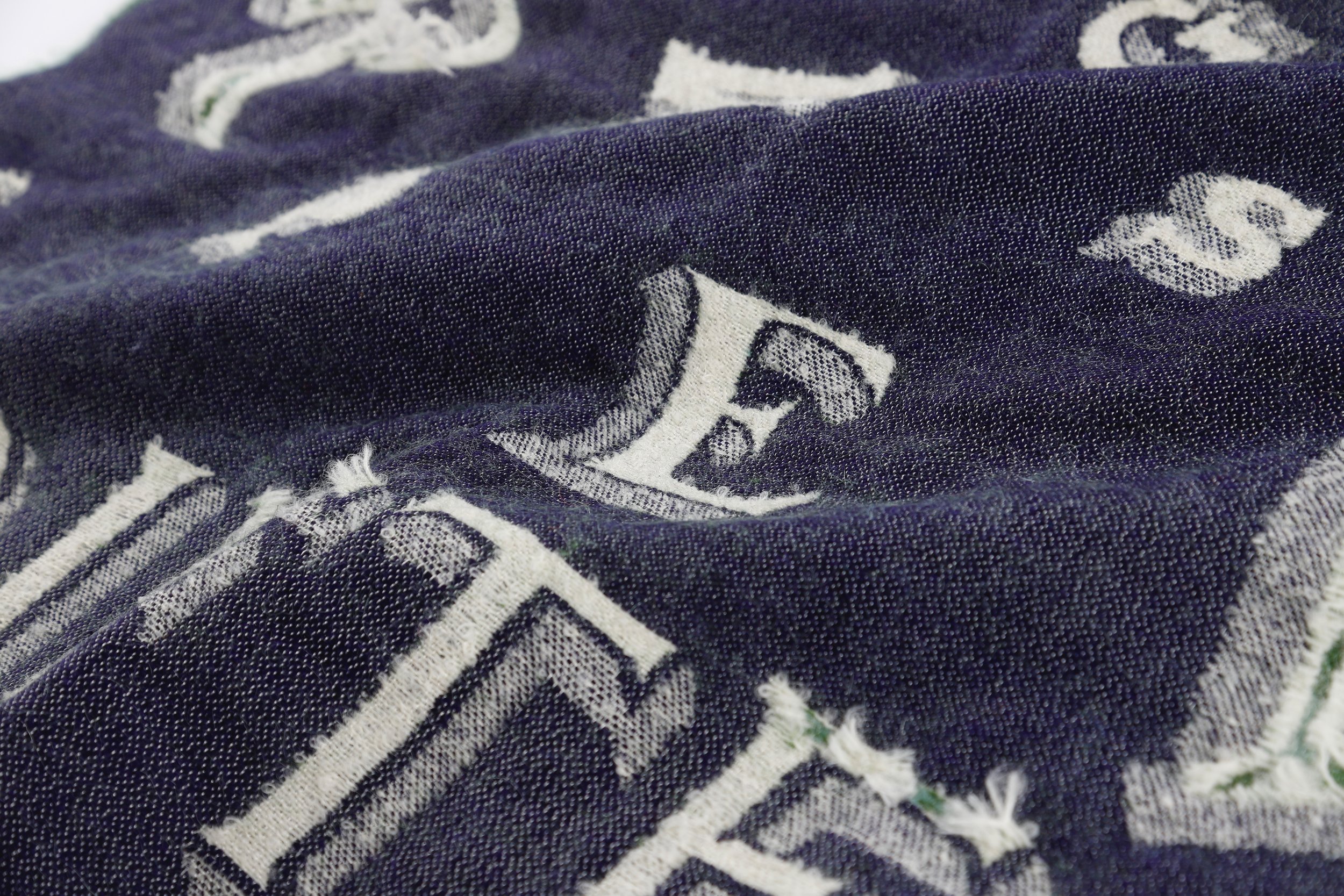Q&A with Loomshed's Chosen Graduates
Credit: Lara Pain @larapaintextiles
by Meg Pirie
This week Fashion Roundtable’s Meg Pirie interviewed the chosen graduates ahead of Loomshed’s Textile Graduate Talk Day. The interview covers traditional folk art, sustainable dyes, hand weaving and the use of surplus British wool from mills.
With more and more crafts being added to the Endangered Crafts List, this is an important conversation in preserving skills as well as our heritage here in the UK. These graduates were particularly focused on localism and small-scale production and it was particularly refreshing to discuss textiles from an earth-first perspective and away from the tired growth model.
Credit: Lara Pain @larapaintextiles
Lara Pain @larapaintextiles
Q: I see that your work is inspired by traditional folk art. How do you think textiles offer a narrative?
A: I have always been drawn to the concept of communicating ideas through abstract forms, and in my opinion textiles act as an amazingly diverse medium for narration. Narratives can be offered in both literal and abstract forms. Whether through intricate imagery, like The Bayeux Tapestry or just through the considered placement of colour, each textile has the potential to hold its own themes and stories. This collection was heavily inspired by traditional techniques of visual storytelling, in particular Swiss Découpage, but set out to present a modern take with playful contemporary themes.
Q: Did you manage to source your wool locally?
A: Finding ways to minimise waste has always been a big priority within my work. A large selection of the wools used in the collection were surplus or redundant from British mills. Even within my own small scale production, I aimed to build this collection with zero waste. At the end of the project all scraps, tests and rejected samples were hand pieced together and sewn into a large scale patchwork piece. This patchwork piece acts to highlight the beauty and potential of unavoidable production surplus and encourages the viewer to reimagine their preconceived notions of “waste”.
Source: Hanna Smyth
Hanna Smyth @han.woven
Q: You have produced a collection of woven interior fabrics - what fabrics did you utilise and how did this marry with your vision?
A: My original vision for the collection was that the fabrics could be used interchangeably and in unison in the same interior space, in effect, providing the end user with an interior decor scheme rather than just a fabric collection. This meant there needed to be cohesion between the fabrics, mainly through colour and organic pattern, but also variation in terms of texture and fabric type.
The upholstery fabrics in the collection are a combination of linens and British wools, which ensures the fabrics are functional, durable and long lasting for the end user. The wool was dead stock which was kindly donated to me by the local Yorkshire mill Abraham Moons, who I interned with last year. I contrasted these hardier upholstery fabrics with furnishing fabrics of softer, finer and more luxurious fabric compositions, including silks, rayons, cottons and finer linens. By having a contrast of fabric types, the interior space which houses the collection will have depth via texture, as well as cohesion via colour and pattern.
Source: Becky Bullas
Becky Bullas @becky.b.textiles
Q: What sorts of plants do you use in your natural dyeing? Can you elaborate?
A: My naturally dyed project was an investigation into sustainable colour. I used food waste I found in my kitchen to dye the silk, ranging from turmeric and tea bags to onion and avocado skins. The dark blue shade I used isn't naturally dyed but in the future I could have used a plant based indigo. I got some unexpected shades that didn't end up being used in my collection, like the green (I have attached an image below) from red onion skins, apparently it could have been a reaction from the type of metal on my saucepans or a chemical on the outside of the onion. I also used alum as a mordant which worked surprisingly well. I was concerned some of the colours, especially the ones containing beetroot and turmeric, would bleed onto the cream areas when washed, but they didn't!
Source: Emma Tipton
Emma Tipton @emmamillietextiles
Q: Your sample collection focused on lace-like effects from hand woven Jacquard samples. Can you elaborate on your process for this?
A: My research into lace led me to the pattern structure of Mock-Leno which is often used to create woven lace. This exploration in my samples started with geometric style structures that played around with mock-Leno and elementary weave, all created digitally and programmed to be woven on the TC2 loom. Further to this I adapted to include visual research and drawing, creating my designs into full lace fabrics which play with positive and negative space in the successful grouping of yarns in the warp and weft.
Source: Mairi Gillies
Mairi Gillies @wovenmairi
Q - How do you achieve communicative storytelling through woven textiles?
A - I form a full textural picture for my textiles by gathering all aspects of the atmosphere, environment and the narrative. I look to see if the atmosphere is soft, peaceful, playful, etc and then link these feelings to quality of material; asking myself should the material feel light, textured or thick and comforting? I try where possible to gather materials and yarn from the environment itself, creating a direct link to the story. I also look at the aesthetics of the environment and the correlating narrative to select colours, textures and qualities to include in my woven textiles. I hope that by paying attention to these aspects, the story of the environment and atmosphere is evoked in the touch and handle of the textiles.
Source: Chelsea Woodbridge
Chelsea Woodbridge @chelswoodbridgetextiles
Q - As a handweaver, how do you ensure you follow a slow-textile path?
A - In terms of how I ensure my weaving follows a slow textile path, there is a number of different ways that I make this happen. Firstly choosing yarns to weave with I always make sure that I supply my yarns from a small business where the yarn is hand spun and made in small batches. I feel like this allows the product to follow a slow process. I also make sure everything I do is by hand this is why I use a countermarch loom [...] this type of loom ensures that everything I do is done by my own hands from the tying up process to the tying on one.
Source: Lara Pain
Source: Olivia McKenzie
Olivia McKenzie @olivia_mckenzie_wovendesigns
Q - Can you explain how you utilise traditional ikat techniques in your work and why this is important?
A - I am a hand-weaver and dyer specialising in the technique of ikat: this involves binding and resist-dyeing yarn prior to weaving. I enjoy planning the bound sections that will produce unique patterns when tensioned on the loom. I find the binding process therapeutic and exciting as the reveal of colours and ikat can only be seen once the loom is set up. I have also adapted the traditional ikat technique by introducing novel, sustainable materials in my weft; cork and raffia.









